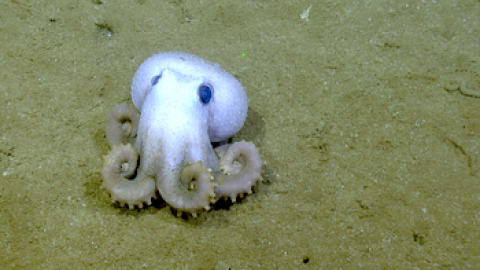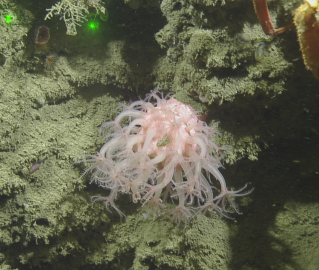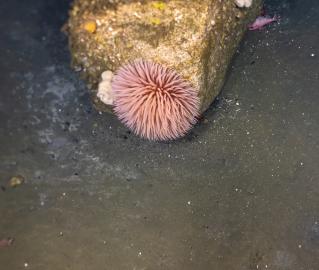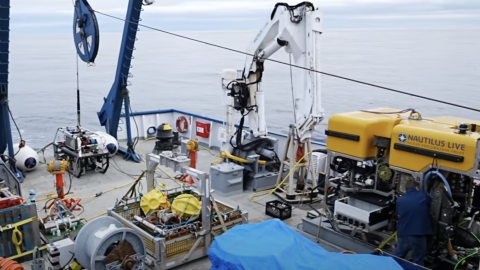Meet the Animals of Endeavour Hydrothermal Vent Field
As if the geology of diving amid towering superheated, fluid chimneys hasn’t been exciting enough, the team has recorded many exciting biological encounters as ROV Hercules meets sea creatures who call the Endeavour Hydrothermal Vent Fields home. Hydrothermal vents host some of the highest levels of microbial diversity on Earth and this Canadian marine protected area along the Juan de Fuca Ridge protects many highly concentrated biodiverse sites monitored and researched by Ocean Networks Canada’s (ONC) observatory. Just beyond the billowing black smoke, the ever-growing ledges of the chimneys are home to dense communities of Ridgeia tube worms, polychaete scaleworms, pycnogonid sea spiders and snails warmed in the flowing venting fluids. Between installations of seafloor equipment, a deep-sea Graneledone pacifica octopus stopped to flex its tentacles. Amid the vents, where nutrients are abundant, the team spotted several predator fish including a Pacific flatnose fish (Antimora microlepis) identifiable by the dorsal fin extending all the way down the body, and a surprisingly pale rattail, also known as the Pacific grenadier (Coryphaenoides acrolepis). The region’s rich surface productivity and active venting boosts biodiversity including crustaceans like deep sea crabs spotted with caprellid amphipod associates along their legs. Don’t forget to watch until the end for a glimpse of a jellyfish floating in the cold waters.
During our NA151 expedition to the waters of British Columbia, Ocean Exploration Trust is supporting ONC’s installation and maintenance of scientific sensors which help teams worldwide learn about this unique site and others along their NEPTUNE Observatory.

Ocean Networks Canada Maintenance and Exploration
For this expedition, we take a trip north to provide support to Ocean Networks Canada’s (ONC) wired seafloor observatory off the west coast of British Columbia where deployed technologies gather thousands of observations about dynamics across an entire tectonic plate.





